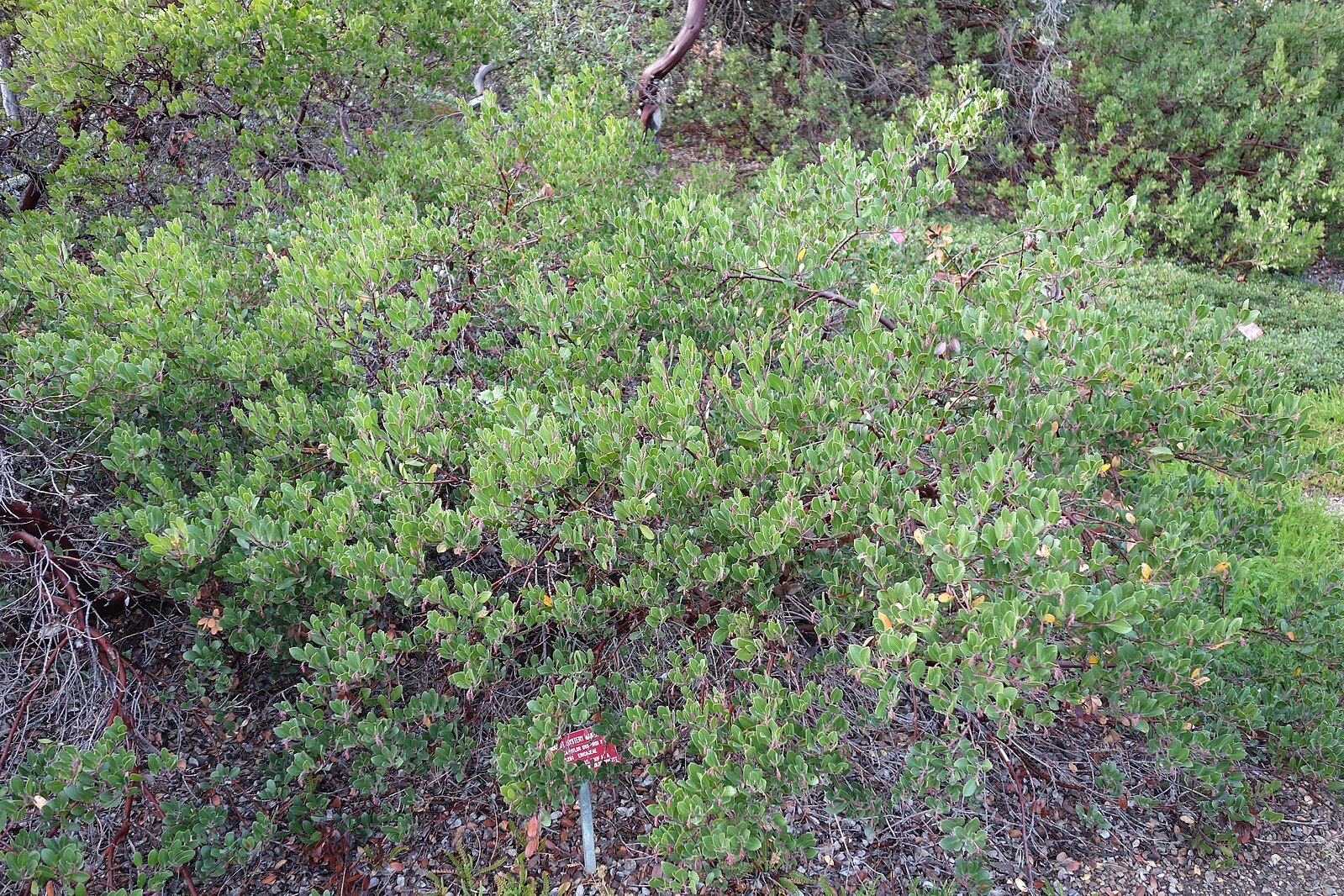Arctostaphylos uva-ursi
Arctostaphylos uva-ursi, commonly known as Kinnikinnick or Bearberry, is favored for its hardiness and aesthetic appeal; this low-growing evergreen brings beauty and versatility to gardens. Explore its native range, hardiness, detailed propagation methods, ideal growth conditions, and remarkable cultivars.
Native Range and Habitat
Kinnikinnick naturally occurs in the cooler regions of North America, Europe, and Asia. It thrives in various habitats, including coastal beaches and mountainous areas, showcasing its adaptability.
Plant Description and Hardiness
This evergreen shrub usually remains under 6 inches in height but can spread significantly. Its small, leathery leaves stay green year-round, complemented by bell-shaped flowers in the spring and red berries in the fall and winter. Kinnikinnick is hardy in USDA zones 2 through 6 and can withstand poor soil conditions and harsh environments.
Propagation Methods
Kinnikinnick can be propagated through seeds and cuttings. For nursery production, cuttings are preferred to maintain genetic consistency. Semi-hardwood cuttings taken in late summer are particularly effective for propagation, ensuring healthier and uniform plants.
Growth Conditions
Soil: Kinnikinnick prefers well-drained, sandy, or rocky soils with a slightly acidic to neutral pH.
Light: It thrives best in full sun to partial shade.
Water: Drought-tolerant once established, Kinnikinnick requires regular watering during its initial growth phase to ensure a strong start.
Pest Control: While generally resistant to pests and diseases, it can be susceptible to leaf spot and root rot in poorly drained soils. Good cultural practices and proper soil drainage are vital to preventing these issues.
Notable Cultivars and Their Traits
Kinnikinnick's diverse cultivars add further appeal:
'Massachusetts': Vigorous growth and adaptability, resistant to leaf burn.
'Vancouver Jade': Dense, jade-green foliage, suitable for sunny to shaded areas.
'Emerald Carpet': Dense emerald foliage, perfect for rock gardens and borders.
'Point Reyes': Large glossy leaves, spreading habit, and drought tolerance.
'Wood's Compact': Compact growth, ideal for small spaces or containers.
'Radiant': Vibrant red stems and bright green foliage for year-round appeal.
'San Bruno Mountain': Large, leathery leaves, excellent for erosion control.
Uses in Landscaping
Kinnikinnick's sprawling habit makes it an excellent choice for slopes, rock gardens, and woodland understories. Its winter interest and attraction to wildlife enhance ecological and native plant gardens.
Conclusion
Arctostaphylos uva-ursi, with its adaptability, low maintenance, and various cultivars, is an invaluable addition to diverse landscapes. It's a resilient groundcover that offers both beauty and functionality. Whether covering challenging terrains or seeking evergreen charm, Kinnikinnick fits the bill perfectly with its ease of care and unique cultivars.
Additional Reading
North Carolina Extension Gardener Plant Toolbox. This source provides detailed information about the natural habitat, soil preferences, propagation methods, and maintenance of Arctostaphylos uva-ursi. It emphasizes the plant's preference for well-drained soil, low maintenance requirements, and propagation through stem cuttings or layering. URL: https://plants.ces.ncsu.edu/plants/arctostaphylos-uva-ursi/ (Retrieved on 11-28-23).
Oregon State University, Landscape Plants. This resource offers insights into the plant's growth form, environmental preferences, and various cultivars, including 'Emerald Carpet,' 'Massachusetts,' 'Point Reyes,' 'San Bruno Mountain,' 'Vancouver Jade,' and 'Woods Compact.' It also highlights the plant's hardiness to USDA Zone 2 and its native circumboreal distribution. URL: https://landscapeplants.oregonstate.edu/plants/arctostaphylos-uva-ursi (Retrieved on 11-28-23).
Western Native Plants, Center for Water-Efficient Landscaping at Utah State University. This source provides comprehensive information on the description, native habitat, soil preferences, moisture tolerance, sun/shade preference, transplanting methods, propagation techniques, maintenance requirements, and landscape uses of Kinnikinnick. It also discusses the plant's pest resistance, foliage characteristics, flowering details, fruit, form, growth rate, and availability in nurseries. URL: https://cwelwnp.usu.edu/westernnativeplants/plantlist_view.php?id=100&name=arctostaphylosuvaursi#:~:text=Fruit%3A%20%20Bright%20red%20to,some%20songbirds%20and%20game%20animals (Retrieved on 11-28-23).

